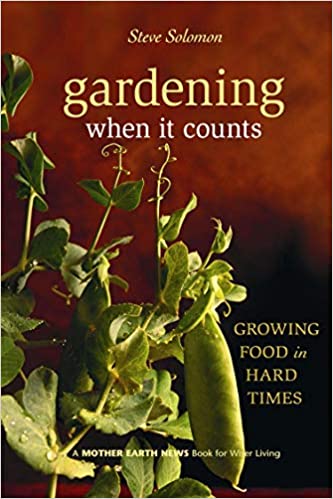Mini Book Review #18: Gardening When It Counts: Growing Food in Hard Times, by Steve Solomon.
Solomon often caustically contrasts his own advice with that of “Everybody Else,” capitalized. (His tone is not that of the warm, friendly grandfather gardener next door.) He used to own and grow for a seed company, so his advice is excellent for someone looking for large production on a low budget. I found some of his advice (details on making organic fertilizer, compost, etc.) very practical and simple to implement.
Some of Solomon’s advice was less practical for an urban gardener (if you live in a low-frost area like much of the South, he recommends alternating between two garden plots and leaving one fallow for several years to get rid of pests and diseases—no doubt an excellent idea, but impossible for someone living on 1/4 acre). But after reading this book, I chose to not push the planting time to my normal early-as-possible. He points out that seedlings struggle so much during those colder spring months that they don’t actually out-produce plants set out later, and may very well experience stunting that keeps them from ever reaching potential. I have found this to be true, and have also seen proof of the major fight against pests experienced when plants are set out too early and slugs and bugs think the early buffet has just been laid out for them.
Quotes from Gardening When It Counts
“…planting too early is the biggest single cause of trouble….growth rates accelerate hugely as the soil warms up.”
Steve Solomon, p. 223.
“My wife…and I believe that when one of us annoys the other, this irritation, rather than being an excuse to throw blame around and have an enjoyable fight, is an opportunity for the annoyed person to clean up some of his or her own rough edges. After all, if I didn’t have something in my own character similar to what is irritating me, I wouldn’t be bothered much when I see this trait in another. In much the same way, I try to see pests as guides to becoming a more skillful grower.”
Steve Solomon, p. 222.

